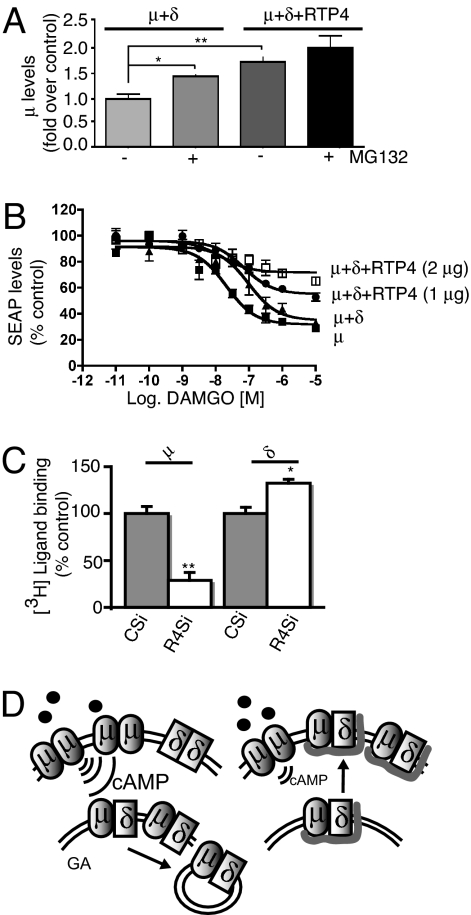Fig. 5.
Functional impact of RTP4 expression. (A) Coexpression with RTP4 leads to decreased degradation of μ-δ receptors as determined by quantification of HA-tagged μ receptors coexpressed with δ receptors without or with RTP4 treated without or with 50 μM MG132 at 37°C for 3 h before harvesting. (B) Coexpression with RTP4 leads to alteration in μ-δ signaling, as detected by the pCRE-SEAP assay. Coexpression of RTP4 leads to a decrease in signaling by DAMGO, as demonstrated by the decreased efficacy of DAMGO. Data are expressed as mean ± SEM (n = 3). (C) Whole cell binding in SKNSH cells transfected with control or RTP4-directed siRNA. The receptor levels were measured in cells 48 h after siRNA transfection using 3H-DAMGO (for μ) or 3H-Deltorphin (for δ). Data are given as mean ± SEM (n = 3), **, P < 0.001 and *, P < 0.05 versus control siRNA. (D) A model for the role of RTP4 in modulating opioid receptor levels. (Left) In the absence of RTP4, μ-δ heterodimers are largely retained in the Golgi apparatus (GA) and eventually routed to degradation pathways. (Right) In the presence of RTP4, the heterodimers are stabilized and routed to the membrane, leading to a reduced population of receptor homodimers.

